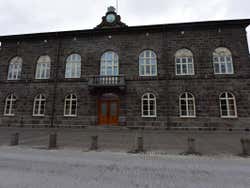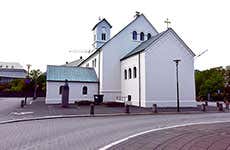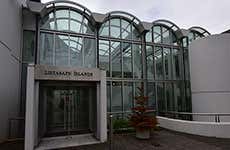
Icelandic Parliament
In the 19th century, the seat of the Icelandic Parliament, also known as the Althing, was moved from Thingvellir National Park to the centre of Reykjavik to direct the future of a nation seeking independence from the Kingdom of Denmark.
History of the Icelandic Parliament
Iceland's first parliament, the Althing (Icelandic: Alþingi), was established in Thingvellir National Park in 930 AD. A flag still stands in the exact spot today in commemoration. However, after several centuries of being run by a government that was highly advanced for its time, the history and politics of Iceland changed when it was conquered by Denmark.
Under colonial rule, the Althing lost all power except as a court of law, until the 19th century when a growing nationalist movement spread across the country. The desire for independence took shape with the establishment of a new Icelandic Parliament in the same building where it's located today, which at that time also served to store the works of art that would later be moved to the National Museum of Iceland.
On July 1, 1881, the opening ceremony of the new Icelandic Parliament took place in the Lutheran Cathedral in Reykjavik, located right next to the government building. Over the next few decades, the Althing worked towards Icelandic independence, achieving its goal concretely in 1944 with the creation of the Republic of Iceland.
What to see at the Althing?
While the interior of the Icelandic Parliament is not usually open to visitors, its façade makes it one of the most striking buildings in the centre of Reykjavik.
The Althing building was–ironically, considering the independence movement at the time–designed by Danish architect Ferdinand Meldahl, director of the Academy of Fine Arts in Copenhagen. In fact, the crown and emblem of King Christian IX of Denmark can be seen at the top of the northern façade of the building.
However, while the architect was Danish, the materials used were purely Icelandic: the outside of the building is notable for its bare black rock: dolerite from Skólavörduholt, the site of the present Hallgrímskirkja. The exterior architecture is finished off with 4 bas-reliefs just below the windows on the second floor where the guardian spirits of Iceland can be seen: a giant, a huge bird, a bull and a dragon.
At the back of the Alþingi, near Lake Tjörnin, is a small but picturesque public garden, the oldest in Iceland, where beautiful red tulips stand out against the dark façade of the Parliament. The park is also home to a bust of Tryggvi Gunnarsson, an important Icelandic politician who died in the early 20th century.
Austurvöllur
The Icelandic Parliament is located in Austurvöllur, one of the most popular and famous squares in Reykjavik. It's here where most political demonstrations take place, and it's also home to several bars and restaurants with terraces that prove very popular when the weather is good.
Right in the centre of Austurvöllur Square is a statue of Jón Sigurðsson, one of the most influential figures in Iceland's independence movement.



Transport
Bus: lines 1, 3, 6, 11, 12, 13 and 14

